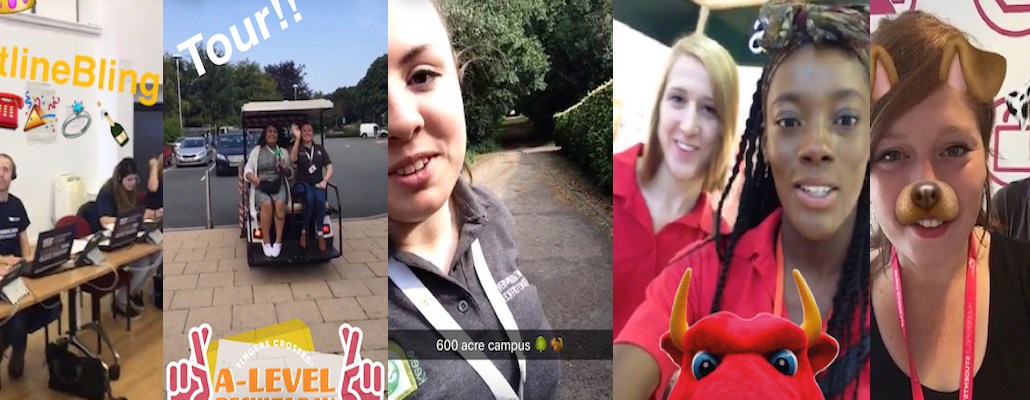Register by Jan 13 to save on passes and connect with marketers from Uber, Bose and more

In her first stage appearance on behalf of the company, Claire Valoti, gm of Snap Inc. in the U.K., is reinforcing the platform’s position in the U.K. — and making a play for the U.K.’s mobile ad dollars.
“Brands are brands, people are people, brands are not people,” she said, speaking at the IAB’s Engage event in London. “People come to Snapchat to talk to their friends, but there’s absolutely a place for brands to be on our platform.”
Snapchat’s ongoing pitch has been that its ad products are an extension of the consumer product — the same developers work on both. In theory, people will give the ads the same attention because they are full screen, vertical, fast paced and with the sound on.
Valoti revealed that U.K. Snapchatters use Lenses, which are overlaid onto selfies, in over 8 million snaps each day. Snapchat users in the U.K. view snaps with geofilters over 40 million times every day. Brands like Nationwide and Vimto have run sponsored features recently. “People are playing with advertising,” claimed Valoti.
Mobile ad spend has overtaken desktop ad spend for the first time, according to the latest IAB figures. In the first half of 2016, U.K. advertisers spent £802 million ($980 million) on mobile compared to £762 million ($931 million) on desktop display.

Valoti said, “I challenge us all to think about raising the bar of what mobile advertising looks like. The approach that works is understanding the behavior on the platform and applying that to advertising.” She added that brand campaigns have doubled purchase intent and doubled sales uplift, “and I don’t think we should be surprised by that.”
In the U.K., Snapchat has 10 million daily active users, two-thirds of them spending 30 minutes a day in the app. And it’s not just kids: 77 percent of U.K. users are over 18.
Agencies have noticed Snapchat’s advances. Rob Scotland, business strategy director at Leo Burnett, said the possibility to sell ads on Snapchat has become easier in the last few months, thanks to the growing local sales team making its ad products more cost effective.
“We don’t have to worry about the technical executions,” he said. “We can brief them from a creative point of view about what we want to achieve, and they move at rapid speed.”
In the last few months Snapchat launched its API — application programming interface — allowing third-party partners to programmatically trade snap ads for brands and agencies. Just a few programs are in beta, and Snapchat wouldn’t comment on whether any were happening yet in the U.K., but when it does, it’s likely this will dramatically bring down costs and lead to more experimentation due to lower budget levels.
“Snapchat should be appearing on more plans, although there is some way to go to make it a regular option,” said Dino Myers-Lamptey, head of strategy at the7stars, citing measurement as the sticking point.
“It needs to open up its data to allow advertisers to really understand the effectiveness of it as a channel, to plan and anticipate the volumes and frequencies of communications,” he said. “Basics when it comes to planning.”
Others have cited Snapchat’s lack of consistent guidelines around influencers as a barrier to more investment. “We’d like to see more from Snapchat about the opportunities to have better relationships with the community and brand advocates,” said John Cole, group business director at Socialyse, Havas’ social division. “When this develops, we’ll be even more keen to build a more robust presence on Snapchat and increase overall investment.”
Facebook remains the dominant platform when agencies plan media because of its reach and innovation in ad formats, according to agencies. “It also benefits from a sales team of ex-agency planners that understand agencies and go out of their way to service them and answer the questions and doubts they may have,” said Myers-Lamptey. When it comes to Facebook and Snapchat, it’s not one or the other, although Snapchat is in a good position to cannibalize budgets from lagging platforms like Twitter.
More in Media

Why publishers are building their own creator networks
Publishers are forming creator networks to regain control, combat traffic declines, and reach audiences shifting toward influencers.

The accidental guardian: How Cloudflare’s Matthew Prince became publishing’s unexpected defender
Cloudflare’s day job is fending off botnets and nation-state cyberattacks, not debating how Google and other AI firms crawl publisher sites.

A timeline of the major deals between publishers and AI tech companies in 2025
Here’s a list of all the major deals signed between publishers and AI tech companies in 2025.





